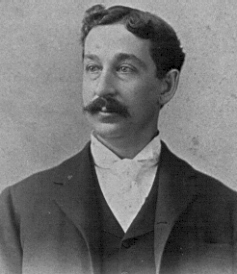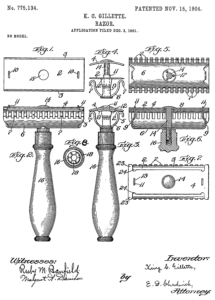By Brett Peruzzi, Contributing Writer

Boston – As the 20th century neared, the era of long beards was coming to an end. King Camp Gillette, a traveling salesman who lived in Boston, who was clean-shaven save for a trim mustache, saw an opportunity. The idea came to him through his own daily shaving routine.
“Standing at his sink in the early morning, King C. Gillette realized his permanent blade razor was dull and required professional sharpening,” Gillette, the business he founded, states in the company history on its website. “In that moment of frustration, he saw that the only necessary part of his blade was the finest part of the tip. He quickly envisioned that tip on a flattened piece of steel, sharpened on both sides, produced at such a low cost that it was easily and quickly replaceable.”
Turning an idea into a viable product
But the gulf between Gillette’s revelation in 1895 and bringing a viable product to market was a wide one. Existing razors were large, thick blades made of carbon steel that required regular sharpening and were used for many years. He wanted to produce a very sharp disposable blade on a small plate of sheet steel that could be discarded once the edge became dull. He consulted with metallurgists at the Massachusetts Institute of Technology (MIT) who told him what he wanted was impossible. After pursuing his idea for six years, he finally got the solution from a chemical engineer, William Emery Nickerson, who, interestingly, had graduated from MIT. Nickerson said he could produce the type of blade Gillette had envisioned.

The origins of a household name
That year, 1901, the American Safety Razor Company (later renamed Gillette) was established by the duo in South Boston, where it remains to this day. Production began two years later. The following year, in 1904, Gillette received US Patent No. 775,134 for his invention. Within two years the company was selling 300,000 units per year. Razor blades were sold for the first time with many to a package, 12 in this case, for $1, while the handle only needed to be purchased once. The business continued to grow dramatically, often fending off competitors by buying them. During World War I, the US government issued over three million Gillette razors and tens of millions of blades to all of its servicemen. By the time the war was over, a sizable portion of that generation of American men had become loyal Gillette customers. Innovations continued over the decades, as multiple blades to enable a closer shave were mounted in the head of the handle. The razor handle also eventually became made of plastic and disposable as well.
Life after a groundbreaking invention
While King Gillette became rich from his groundbreaking invention, he wasn’t as enthusiastic a capitalist as one might imagine. He became a strong supporter of utopian socialism when he was older, and published three books on the topic. His plans for a massive utopian community in upstate New York, powered by Niagara Falls, never came to fruition. He tried to enlist Theodore Roosevelt as president of the planned community, at a salary of $1 million, but Roosevelt declined.
Gillette nearly went bankrupt towards the end of his life, due to over-investing in property and because of the decline in the value of his stock holdings in the Great Depression. He died in Los Angeles in 1932 at age 77, but the company he founded, now owned by Proctor & Gamble, is still thriving over a century later, commanding more than half of the $4 billion disposable razor market, with its products sold in over 200 countries.












